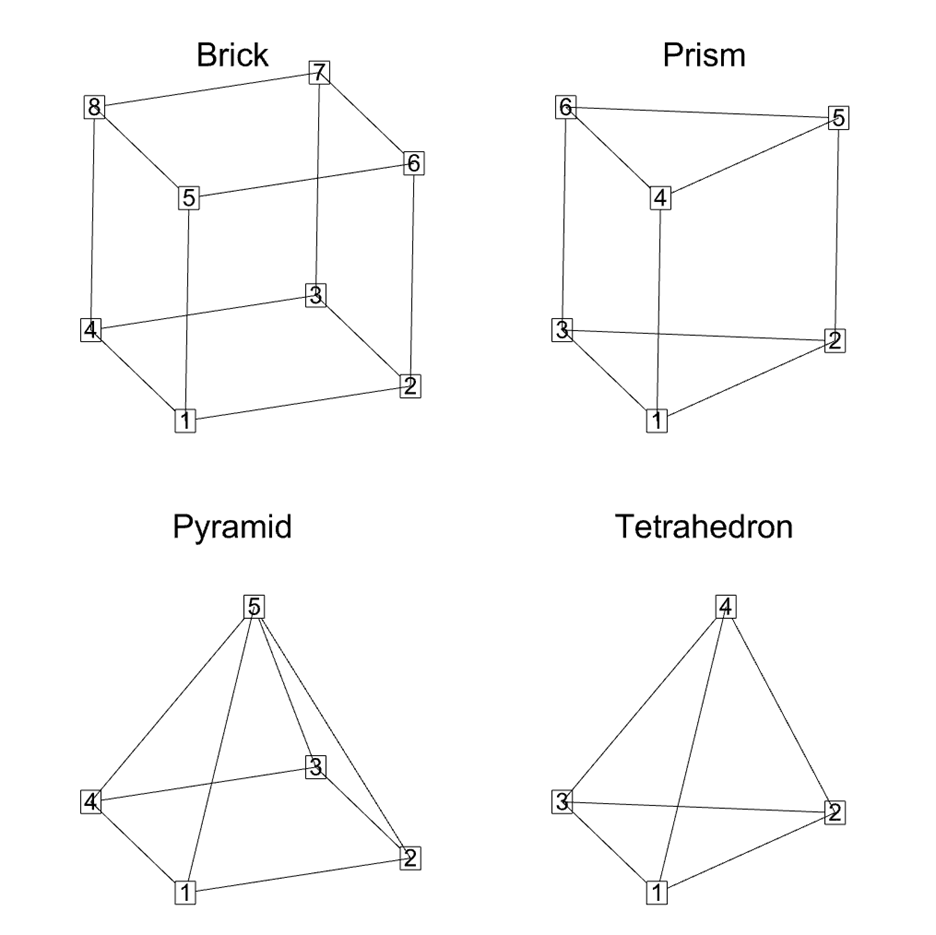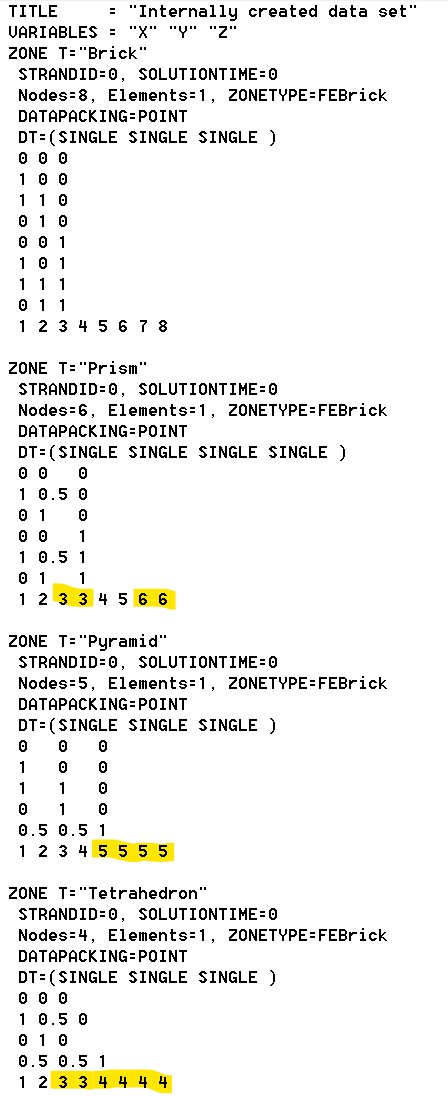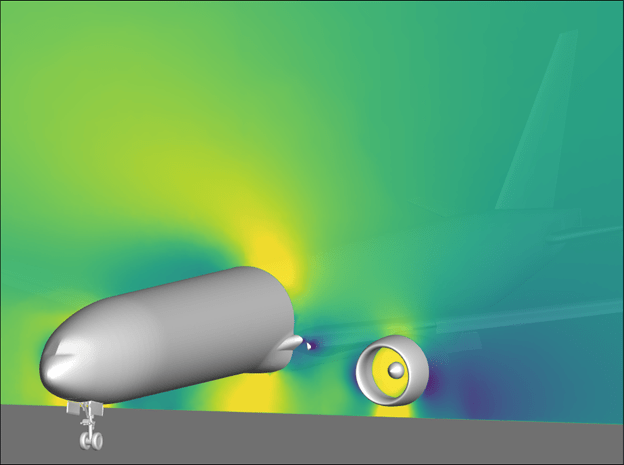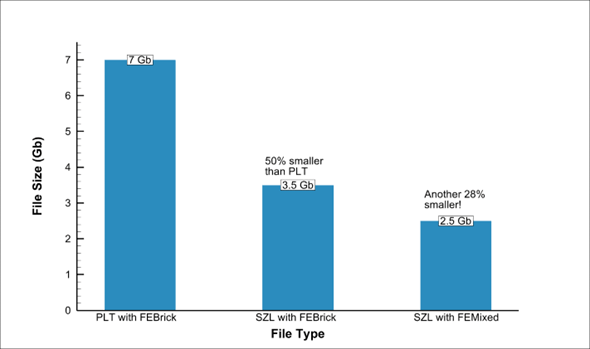Tecplot 360 2023 will be introducing a new zone type called FEMixed. So, what is an FEMixed zone and why is it necessary?
First, let’s start with the finite element zone types (cell shapes) that Tecplot 360 2022 and earlier versions support. Tecplot 360 2022 and earlier require that all the cells within a single zone are of the same topology. The shapes supported are:
WEBINAR RECORDING
Higher-Order Elements in Tecplot 360 2023
This webinar gives you a tour of the
360 2023 Beta which supports higher-order elements.
1D & 2D:
- Line Segment (aka Bar)
- Triangle
- Quadrilateral
3D:
- Tetrahedron
- Brick (aka Hexahedron)
Two Common CFD Element Shapes Missing from This List of 3D Shapes:
- Pyramid
- Prism
Grids that have the two element shapes above must be represented as an 8-node (brick) element with collapsed faces. This solution works, but results in cell connectivity arrays that have duplicate nodes, which means wasted space both on disk and in RAM. In the image below you can see the number of nodes required for each element shape.


Tecplot 360 has native support for Tetrahedrons, but if you want to have a single volume zone with a mix of Pyramids, Prisms, and Tetrahedrons, then you’re required to use an 8-node element to represent all these shapes. Looking at the node connectivity arrays (highlighted) in the Tecplot ASCII file above, notice that the Prism element is represented as an 8-node element, so we must reuse nodes 3 and 6 to collapse one face to create the Prism. Similarly, the Pyramid and Tetrahedron elements have reused nodes to collapse faces to create those element shapes using an 8-node brick representation. That these other element shapes are represented with 8-nodes may not look like a big deal, but let’s consider a much larger dataset. An example of this is shown below.

This dataset (courtesy Metacomp Technologies) is composed of 183 million volume cells.
The dataset pictured here (courtesy Metacomp Technologies) is composed of 183 million volume cells. These cells are stored as Finite-Element Brick but are physically a mix of Prisms (near the surface), Tetrahedrons (far field), and Pyramids. Now, consider that you have 183 million elements, each of which has 2 – 4 extra integers in the connectivity arrays. That amounts to a lot of wasted space in the data file and in RAM when loaded into Tecplot 360.
You might ask – “why not load each element shape as a separate zone?” For this dataset, you’d likely save some space if you split out the tetrahedrons into a separate FE-Tetrahedron zone – since the connectivity would only specify 4-nodes per cell rather than 8-nodes. However, you’d still have to use bricks to represent the Prism and Pyramid cells. Splitting into separate zones creates an artificial boundary in the volume data between the different cell types; this also requires coincident nodes along that boundary, as opposed to simply reusing existing nodes in the cell connectivity.
FEMixed Zone Type to the rescue!
A FEMixed zone is a single zone with multiple ‘sections’ where each section is a homogenous element shape and grid order (more on grid order later). The supported element shapes in an FEMixed section are:
1D:
- Bar
2D:
- Triangle
- Quadrilateral
3D:
- Tetrahedron
- Pyramid
- Prism
- Hexahedron
With the addition of native support for Pyramid and Prism, the volume data above can now be composed of a single FEMixed zone with three sections – one for each of the element shapes: Tetrahedrons, Prisms and Pyramids.
It’s important to note that all sections of an FEMixed zone must be the same dimension. In other words a single FEMixed zone may not contain a Triangle (2D) section and a Tetrahedron (3D) section.
Let’s look at the size of this dataset on disk, comparing PLT with SZL and FEBrick with FEMixed:

File Size vs File Type (The PLT format does not support the FEMixed zone type)
The SZL file is much smaller than the PLT file because the SZL file format uses lossless compression to compress the nodemap. Due to the large number of reused nodes in this dataset we see very good compression relative to PLT. Furthermore, the use of the FEMixed zone type results in a further 28% reduction in file size. This dataset illustrates that for large finite-element datasets the nodemap starts dominating the size of the file. Due to this, many CFD codes are exploring higher-order element support to reduce the total number of elements in the dataset.
And on that note…
Higher-Order Element Support
The FEMixed zone type also supports higher-order elements! Each section in the FEMixed zone can specify a different grid order (P-Order) (1-4 where 1 is linear, 2 is quadratic, etc.). The initial release of higher-order element support will support the Lagrangian cell shapes as defined in the CGNS standard, up to P4 (quartic).
| Dimensionality | Shape | Linear Interpolation | Quadratic Interpolation | Cubic Interpolation | Quartic Interpolation |
|---|---|---|---|---|---|
| 0D | Point | Use I-Ordered | Use I-Ordered | Use I-Ordered | Use I-Ordered |
| 1D | Line | BAR_2 | BAR_3 | BAR_4 | BAR_5 |
| 2D | Triangle | TRI_3 | TRI_6 | TRI_10 | TRI_15 |
| Quadrangle | QUAD_4 | QUAD_9 | QUAD_16 | QUAD_25 | |
| 3D | Tetrahedron | TETRA_4 | TETRA_10 | TETRA_20 | TETRA_35 |
| Pyramid | PYRA_5 | PYRA_14 | PYRA_30 | PYRA_55 | |
| Pentahedron | PENTA_6 | PENTA_18 | PENTA_40 | PENTA_75 | |
| Hexahedron | HEXA_8 | HEXA_27 | HEXA_64 | HEXA_125 |
Reference to CGNS GitHub.
If you have a code that uses mixed-elements or higher order elements, FEMixed zones may be right for you.
Reach out to our Support Team to learn more.




